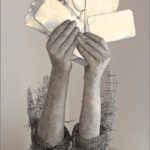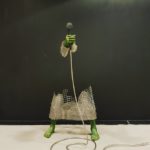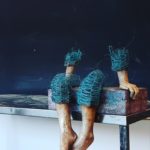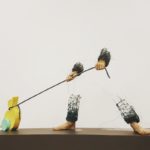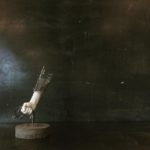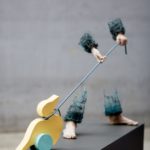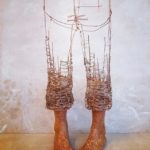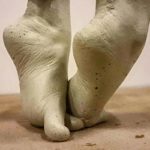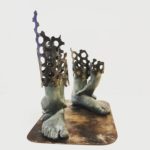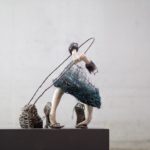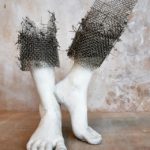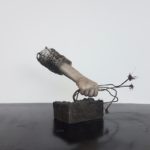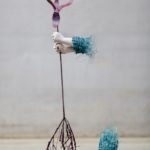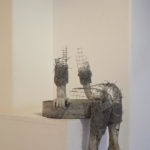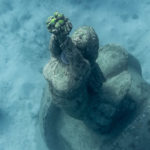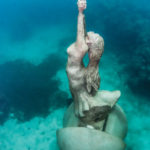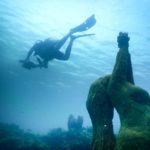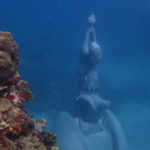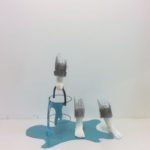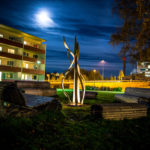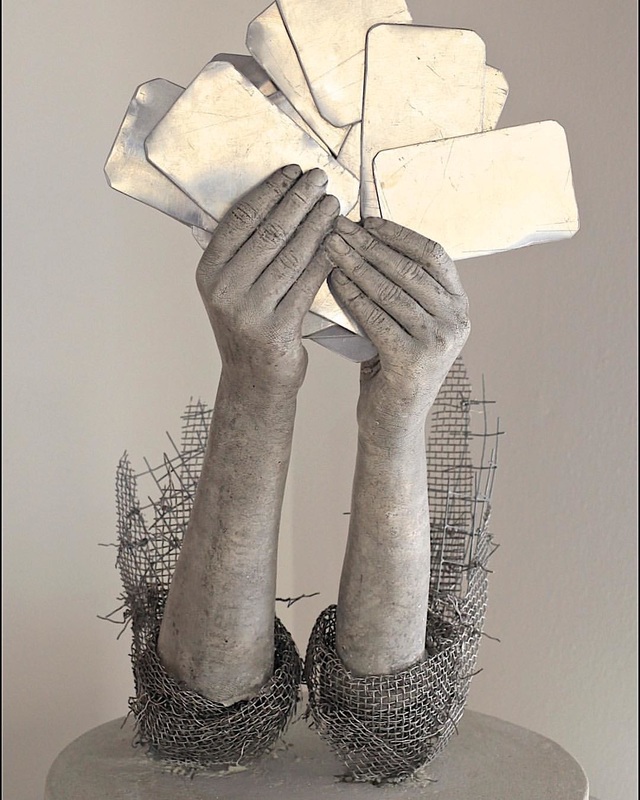
Artist Bio
Lene Kilde says that her sculptures are made of “concrete, wire, and air,” plus the viewer’s imagination. She finds a pure form of communication in the body language and emotions of children. Lately, she creates only the hands and feet of a figure. Then she then ties them together with the aforementioned materials and viewer’s minds.
Lene completed her Master Degree in Product Design in 2012. The following year, she was awarded the Norwegian Arts Council’s three-year work-scholarship for young artists. Since that time, she has been represented by Galleri Ramfjord.
This year, for the first time (with tremendous success), she participated at SCOPE Basel, one of the famous international art fairs featuring emerging artists. Her sculptures sold out.
Kilde was asked by Norway’s biggest hospital, Ahus, to embellish their premises, and in 2013, one of her sculptures was acquired by NRK (Norwegian Broadcasting Network).
In 2014 she was an artist-in-residence in Grenada where she eagerly immersed herself in Grenadian life and culture. She quickly became entranced with Grenada’s Underwater Sculpture Park, exploring and experiencing it, and doing research for a sculpture that would not only be helpful to the coral reef, but also have a strong connection with Grenada. Her resulting underwater sculpture is based on the local fable of the Nutmeg Princess, a tale spun around a beautiful Caribbean princess who once lived in a bottomless lake.
INTERVIEW
Artist: Lene Kilde
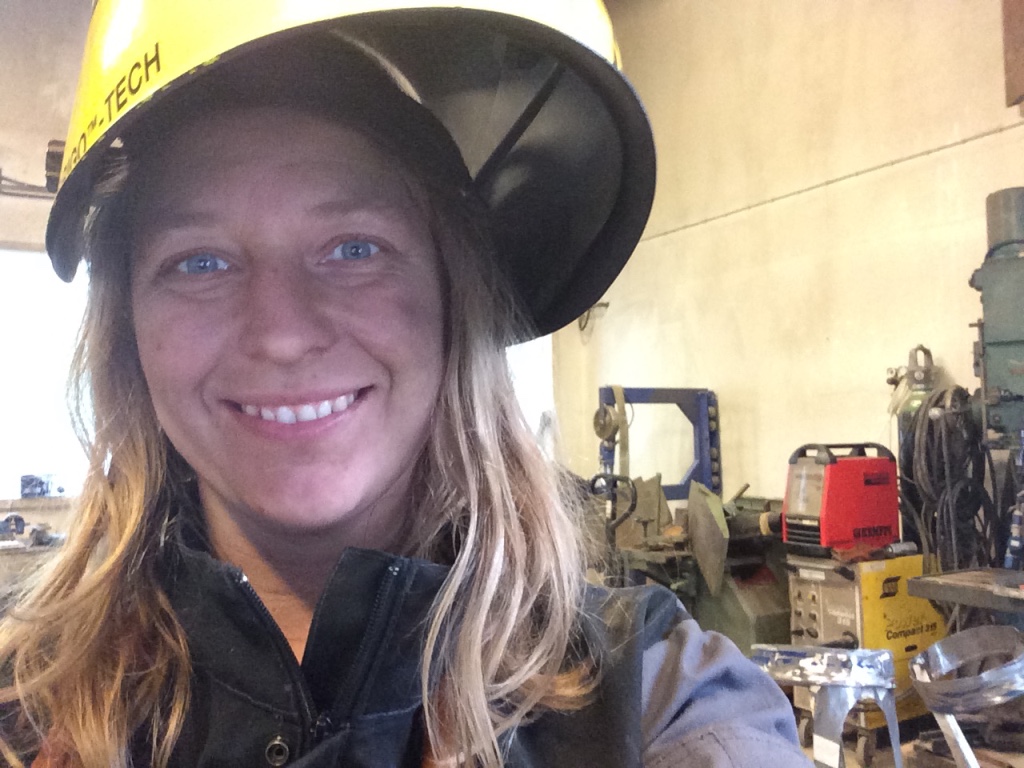
Your work is inspired by children. Would you tell us a bit about your own childhood in Norway?
I grew up in a little town close to the capital with my working class family. We lived very close to the forest where we were lucky to experience the “wonders of nature.” I am the oldest of three. We had a very exciting but safe childhood. At that time, I thought that children usually turn into someone else when they grow up. I didn’t want that for me. If identity has an age, I would say that my identity is how I felt when I was six.
When did you discover sculpture as a form of expression?
I guess I have been involved in art my whole life. I was very interested in woodcarving as a child, and when I was five, my parents made me a studio in the basement. I spent many hours there making wooden sculptures and furniture. Becoming a sculptor is something I could not avoid; and if I were to try to avoid it, there would be a never-ending, terrible struggle. My family has been very supportive of my career, which is something very important to me.
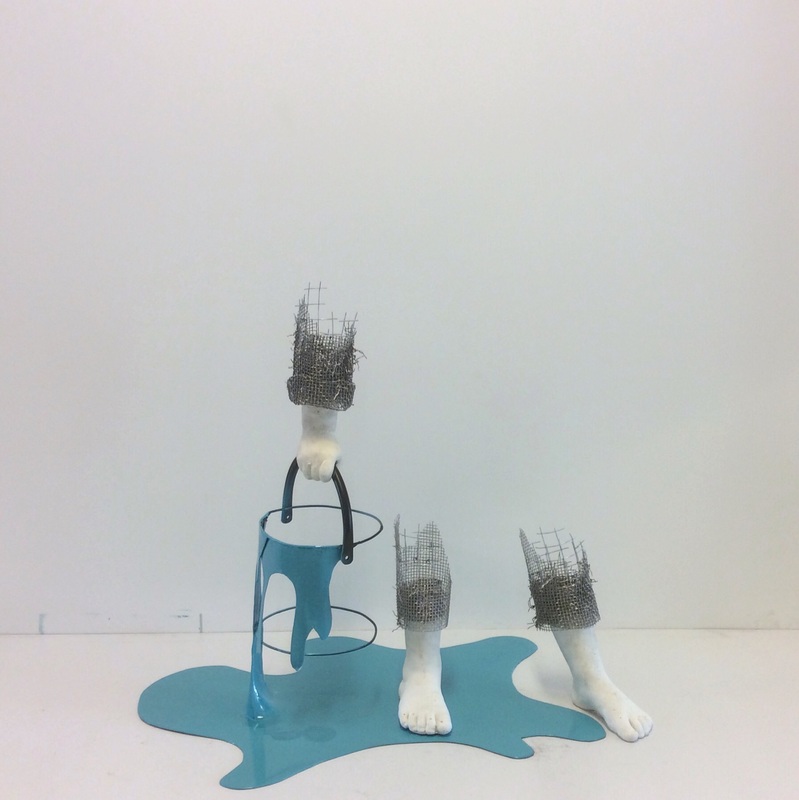
What is your creative mode like? Do you have a concept first and go from there? Or is the process more open?
I have found children and their emotions a very repeatable starting point, and I like to make a series of sculptures connected to a situation or a mindset. I do make use of my own childhood, but mostly I study my daughter, my nieces, and the children of my friends. Whenever I need a new idea, I make a short visit–and walk home with fifty new ideas just by watching kids and talking with them.
As my bio mentions, I make sculptures using concrete and copper mesh. I show a few body parts, usually only hands and feet, which are then placed in relation to each other using the mesh. I want the viewer to imagine the rest. People add their own stories. I think that the air around the sculpture supplies the things that are not there; and that causes people to believe.
What is your daily routine when working?
The college where I earned my masters has a very generous artist-in-residence program that allows me and some other former students to use all their workshops. The school has one of Scandinavia’s best machine parks with complete wood, metal, and ceramics workshops. I spend a lot of time there. It is inspiring to talk with the teachers and students. Some times they give me a hand or a good conversation. I have my own area in the ceramics workshop. After every big exhibition, I like to give myself a little present in the form of a trip for a few weeks. A trip to someplace warm.

Your underwater sculpture “The Nutmeg Princess” at Molinere Bay is one of the most famous art attractions in Grenada. How did you come up with such a big project?
It started with my wanting to visit a warm foreign country to do an art project and then exhibit in a local gallery. A friend of mine told me that she had just been on holiday in Grenada, a lovely island in the Caribbean, and that I should go there. On line, I discovered this marvelous underwater sculpture-park on the island. The park functions as an artificial reef. I am a diver, and I was really keen to see with my own eyes those fantastic sculptures. I was even more eager to place my very own sculpture in that great company of concrete sculptures with sponges and seagrass all over them! I wrote the park manager asking if the park needed a new sculpture.
My scholarship from the Norwegian Art Council gave me economic security for another year, so when the park manager accepted my proposal, my daughter and I moved to Grenada for four months.
I learned all about Grenada and made many sketches. One of them depicted the Nutmeg Princess, a character from a storybook by local author Richardo Keens-Douglas. The author and people involved with the park helped me decide that a sculpture called “The Nutmeg Princess” would represent the island in a good way.
She is eleven feet tall and weighs about eight tons. There was no crane on the island strong enough to carry her to the pier. We had to rent one from another island. From the pier, with the help of air balloons and professional divers, she was dragged by a boat and sunk into the water.
There she stands, changing day by day, providing hiding places for marine life, and surfaces for corals and sponges to attach and grow.
The whole project was really a big adventure for me, and I would love to do a complex and meaningful project like that again soon.
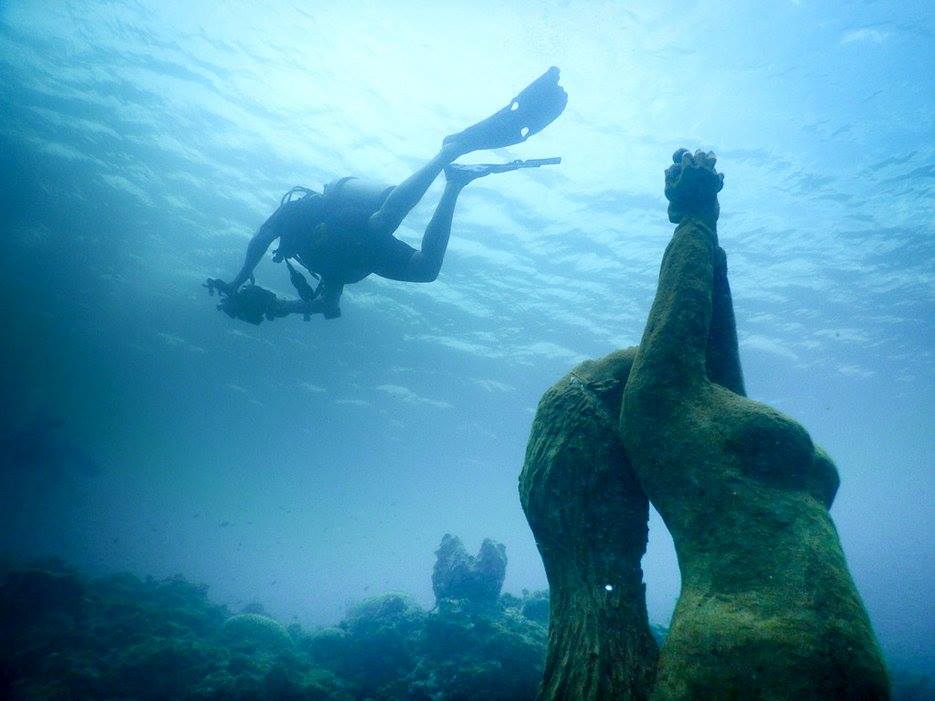
What is the most important lesson you’ve learned along the way?
I’ve learned to change my expression, which is very difficult. When I first started working in a professional manner, I was making wire-string sculptures. I called it “To draw in open spaces,” and people loved it. After a few years I started to get bored, but I found it difficult to start doing something else. I did not want to become “the wire sculpture artist,” but somehow it was difficult not to respond to expectations. That was when I decided to go to Grenada.
I think what I am doing these days is a combination between the concrete “Nutmeg Princess” at Grenada and the wire-string sculptures. One of the most important things for an artist (at least for me) is to renew and develop. I don’t want to be stuck in an expression that no longer gives me anything.
When I get a new idea, or when something that I am unsure about turns out to really work, I get that sparkling feeling of happiness. I love that. I am thankful to say that I have that feeling several times every day. It happens if you stay on the edge of your comfort zone, giving yourself a few surprises every now and then!
